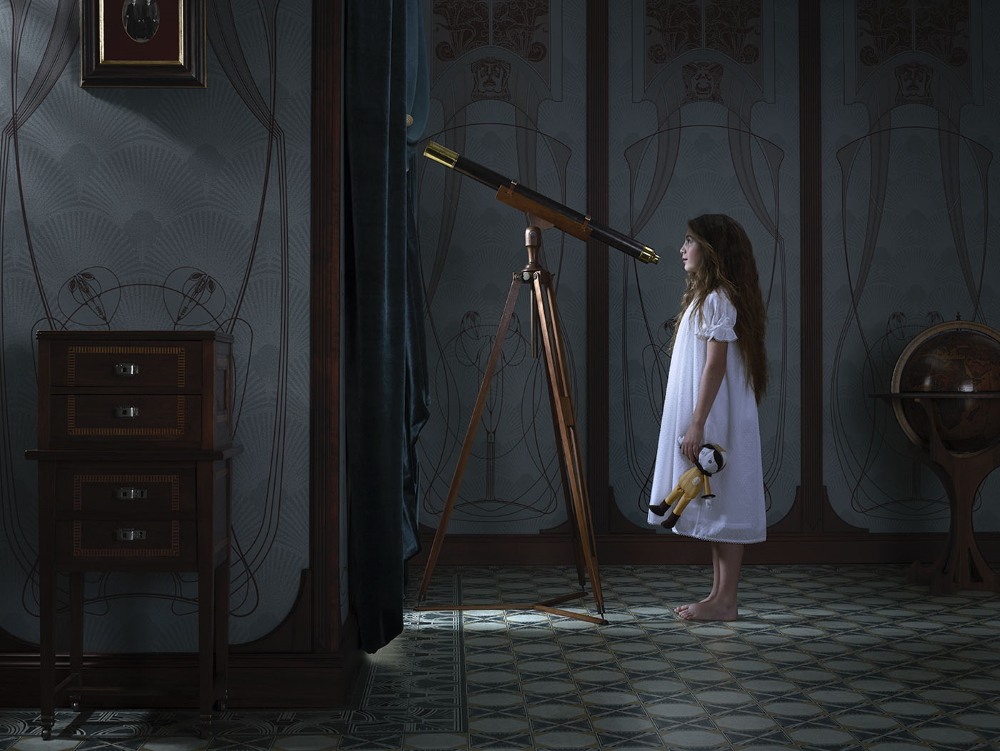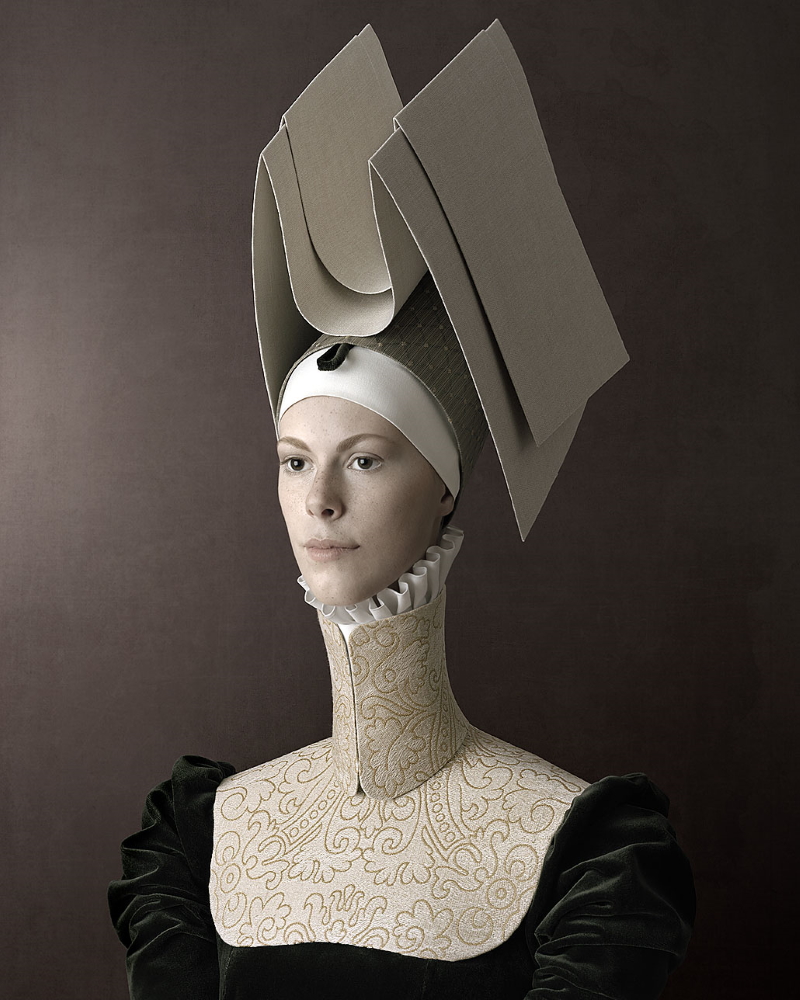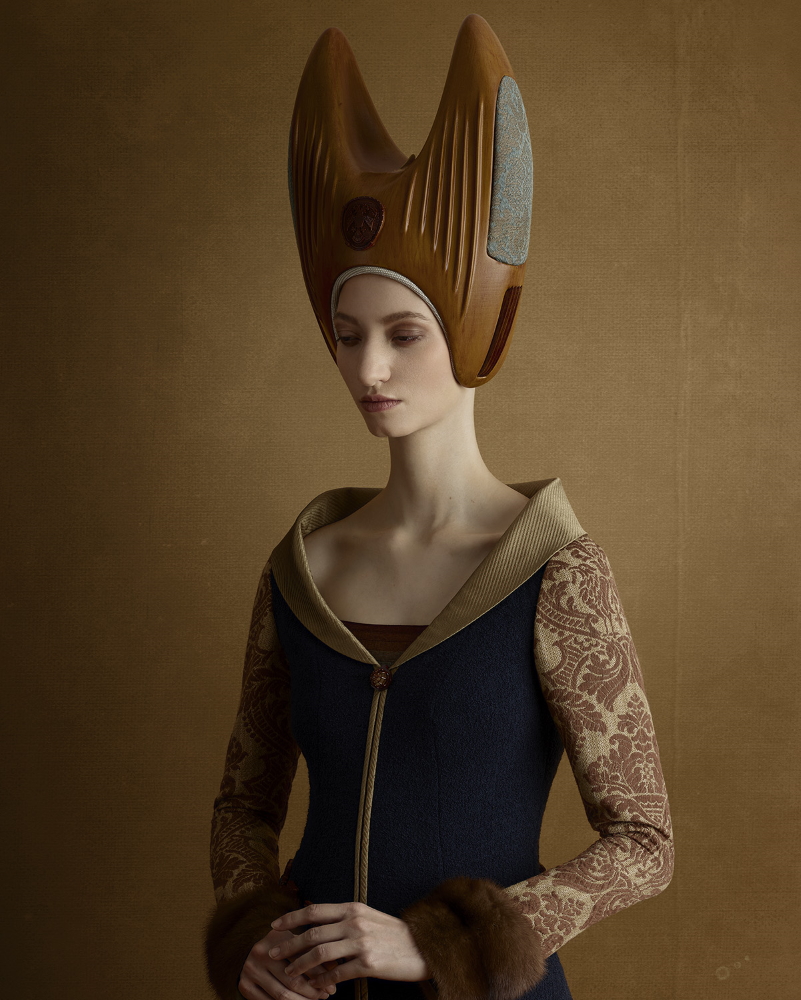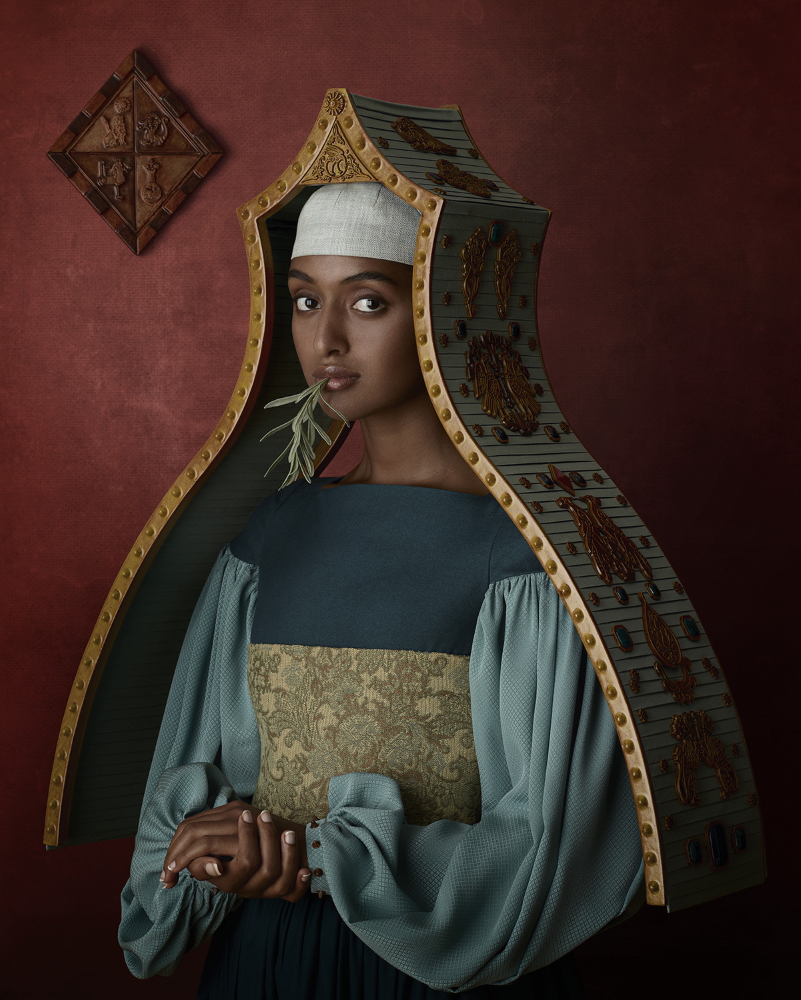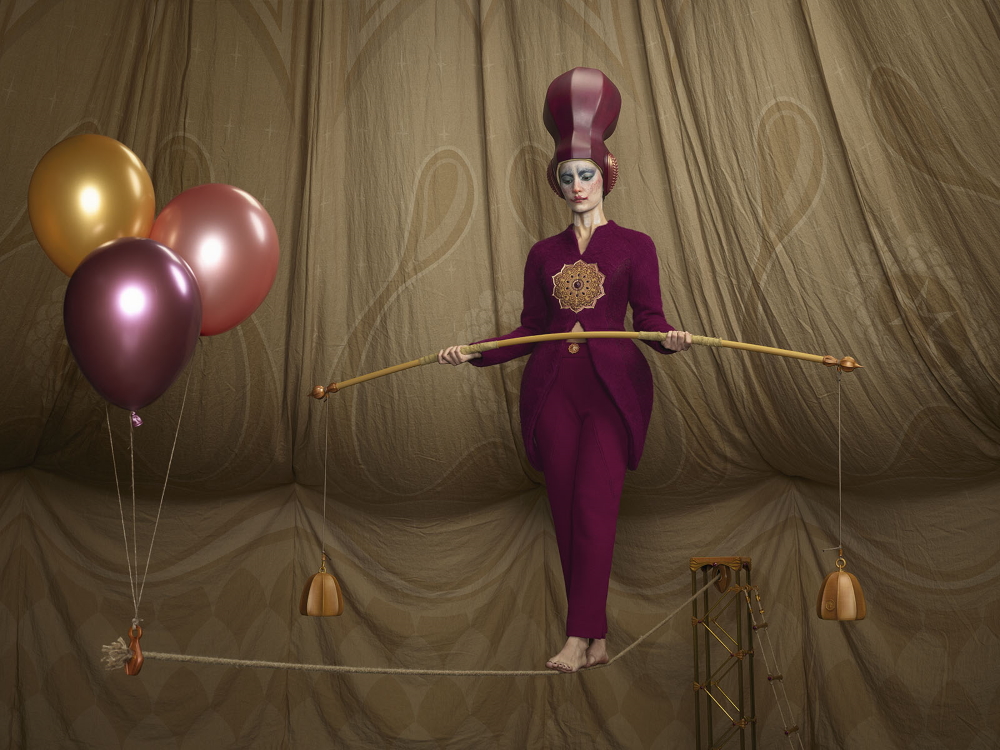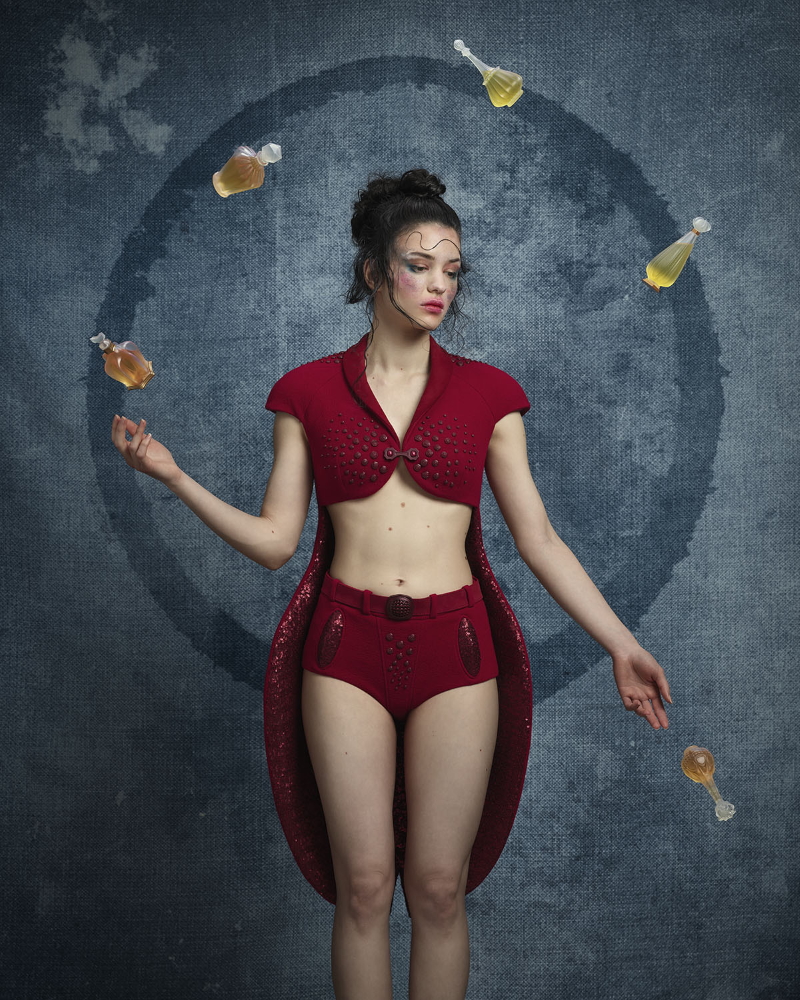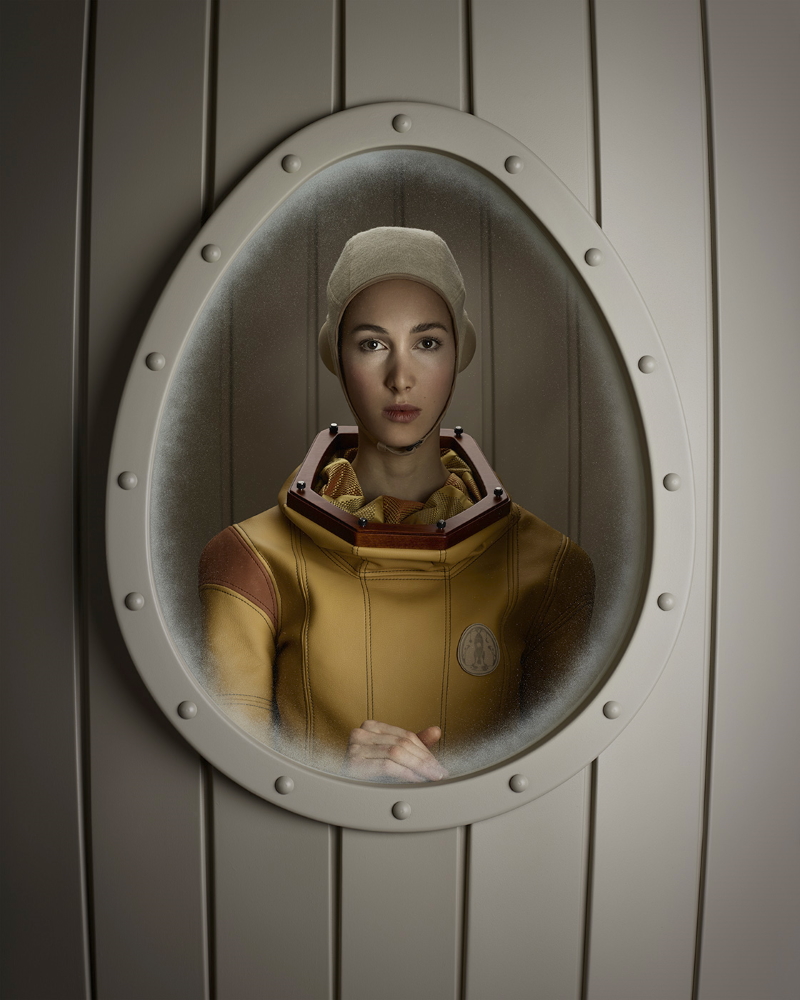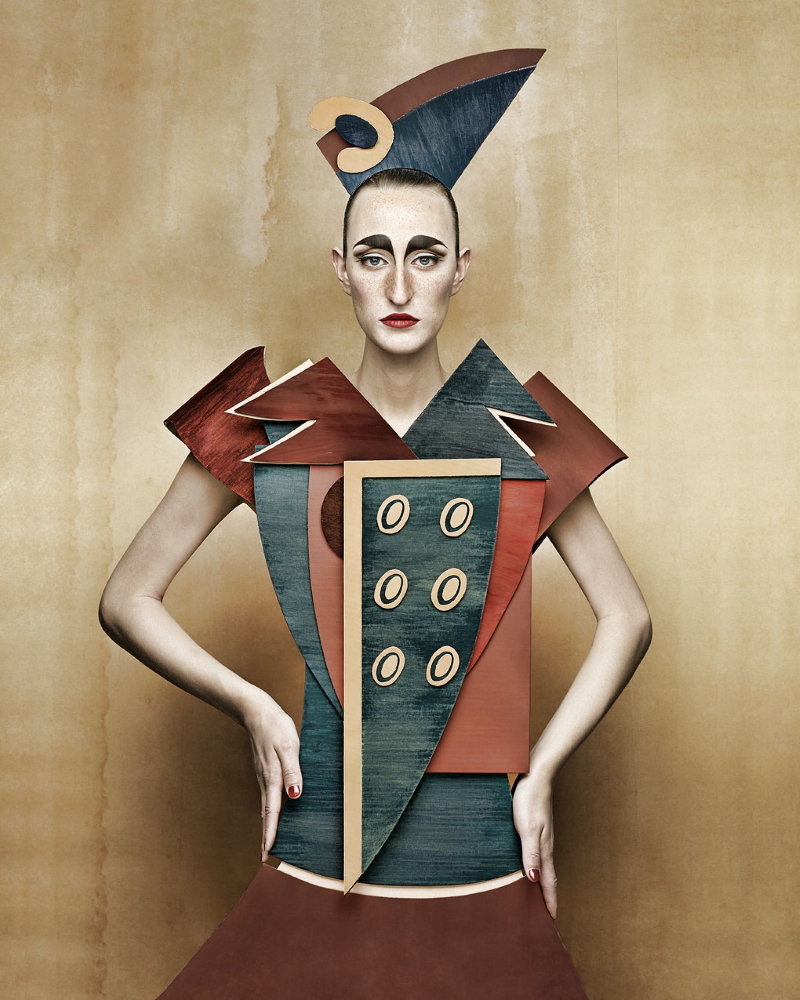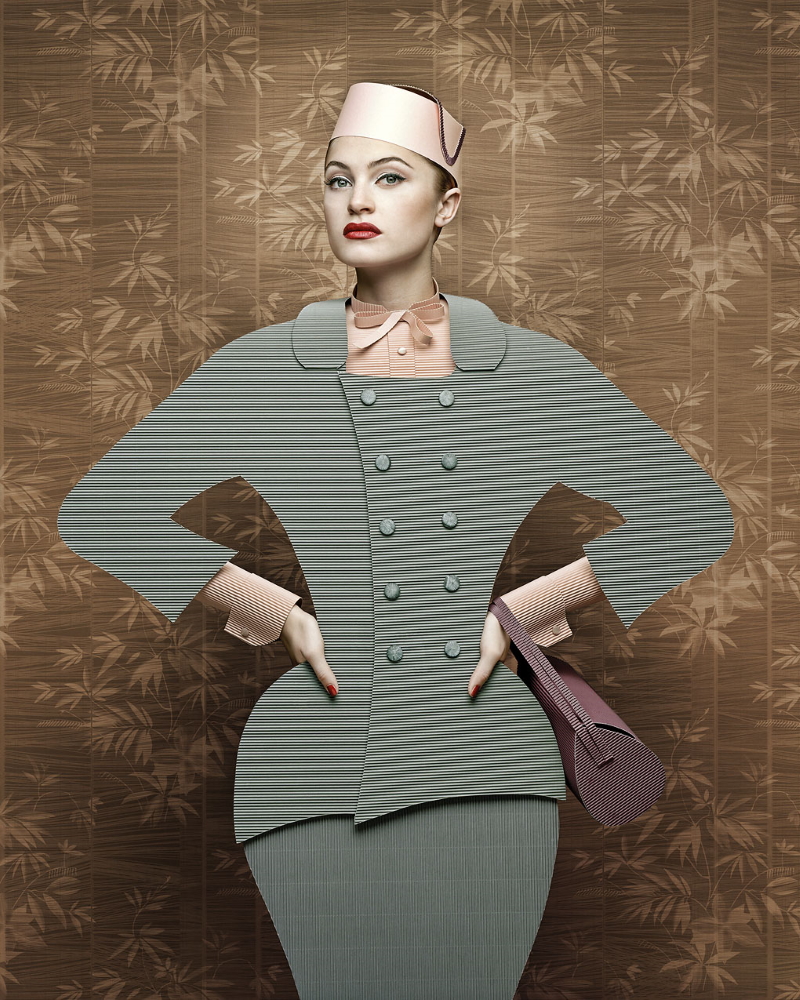Christian Tagliavini
fine arts photographer
Switzerland / Italy
„An extravagant new tribute to the rise of portraiture 600 years ago“. The subline of the „The power and the Glory“-story in the ‚Smithonian‘ magazine (of the Institute by the same name) gives a good first impression of what the timeless art of this extraordinary photographer is all about. „In his painterly Mise-en-scène portraits perfection, art and craft merge into grandiose visual worlds“, determines the German ‚Photo Presse‘ correctly. The title of the Italian mag‘s „fotografare“ cover story gets it all to the point in just four words: „imperfect time, eternal beauty“.
Christian Tagliavini
fine arts photographer
Switzerland / Italy

Simply fascinating and truly unique are these portraits. They quote the grace and beauty of early renaissance art and are staged with the help of contemporary photography. The visual compositions are realised by a photographic artisan who "builds" his own imagery. The models' magnificent dresses are made from materials that were already used in the 15th century. The often elaborate headdresses are partly built with a 3-D printer. Authenticity is paramount in this homage to a bygone era by this favourite of the art scene.
The work of Christian Tagliavini (* 1971 in Switzerland) is heavily shaped by a childhood spent in Parma. There he grew up immersed in the rich artistic culture of the Plain of the Po, Italy’s longest river. A self-taught photographer, Tagliavini originally trained in architecture and worked as a graphic designer. His interest in photography was sparked in 2000 at a photographic exhibition in Milan. Fascinated by the technical aspects of medium he tried his hand at several photographic disciplines before discovering that the stage design and arrangement of actors in a scene was the most effective way to capture the stories that lived in his imagination.
Embracing the art of slow photography, Tagliavini’s creative approach involves meticulous planning and careful design. Each project begins with initial historical and iconographic research, feasibility assessments, sketches, storyboarding, colour experimentation, and composition before he sets about making his creative vision a reality. For doing so various techniques are used to handcraft every detail, including the props and backdrops. The costumes are fashioned to Christian’s detailed designs, including the fabric and colour choices, and are made-to-measure for every single model in which he as the director always favours unconventional beauty and personality over a classical aesthetic. Considering such a detailed and precise work procedure it’s no surprise that „CT“ calls himself a „photographic craftsman“.
Choosing unexplored concepts as themes, Tagliavini’s evocative images with a stunning, fantastical effect partly reminiscent of his early photographic idols Erwin Olaf and Gregory Crewdson, narrate open-ended stories. They invite the viewer to actively experience unique ideas, sensations and feelings for themselves.
Christian Tagliavini won ‚the Hasselblad Masters Fine Art Category‘ in 2012 and ‚the IPA Fine Art: Portrai‘t prize in 2013. His work including his series „1503“ (2010), „Carte“ (2012), „Voyages Extraordinaires“ (2014), „Voyages Extraordinaires/L‘Attente“ (2015), „1406“ (2017) and „Circesque (2019-2021), which are highly regarded on the photographic art market, have been exhibited in many art galleries as well as museums worldwide, They are held in renowned collections too.
Christian Tagliavini whose first monograph by his name (160 pages, ACC Publishing Group) features all of his photography series to date and a look behind the scenes, works and lives in Ticino (Southern part of Switzerland).
Interview October 2022
Between early Renaissance and contemporary Modernism: new photographs like old paintings
INTUITION/IMAGINATION
How does intuition present itself to you – in form of a suspicious impression, a spontaneous visualisation or whatever - maybe in dreams?
It varies from time to time, there is no rule. Sometimes it is built slowly, other times it is a flash or it becomes concrete and appears while working, or I look for it by studying the forms and creating a flow of thoughts that can lead me on the path of intuition.
Will any ideas be written down immediately and archived?
I usually sketch or take notes to try to fix what I “saw” in my mind as much as possible because I'm afraid of losing it in my memory.
I am a predominantly visual person and therefore I make sketches.
?: How do you come up with good or extraordinary ideas?
I never know before. What I do is divided between experiments or paths already known. I never know before if it's a good idea or a bad idea, others decide that.
Are great ideas based on intuition and do they reveal themselves in a kind of clear as well complete version that just has to be realized? Or is it endless trials and errors (after the first spark) that result in constant developments up until the final result?
I am self-taught in the world of photography, I have learned with errors and trials (try and error) but the experience and skills that I have acquired over time are now helpful. The more I gain experience, the less I make mistakes. Experience also gives me the opportunity to proceed more quickly and to understand what I can do and what I cannot. Generally, I am always very critical of myself and redo until I reach the result I imagined.
What if there is a deadline, but no intuition? Does the first fuel the latter maybe?
In my case, the deadline accelerates intuition. Sometimes it is a benefit for me to have a deadline because it stimulates intuition and decision-making processes a lot and leaves no room for doubts.
INSPIRATION
What inspires you and how do you stimulate this special form of imaginativeness?
In various ways, there is not just one method. I can get an idea by watching a movie, reading a book, talking to someone, watching an exhibition, or taking a trip. Fortunately, there are unexpected and surprising aspects that make this process always interesting and challenging.
How do you separate the good from the bad and which ideas are worthwhile to be explored further or whether one idea has the potential of being outstanding really?
My series keep me busy for a year or two, a long time, and I have to stay motivated for a long time. Deciding on a job that then lasts two years is highly problematic. In the end, I choose what I prefer to personal taste. I work on the one that stimulates me the most and that gives me the greatest challenges and learning opportunities.
Has it to appeal to you primarily or is its commercial potential an essential factor?
In the past I worked making what clients asked me in the graphic field, I was a performer. Then I chose to take a more difficult path but which allows me to express myself without customer influence. This is the main part of my work which is almost entirely in the artistic field. If I accept commercial commissions I have to be very motivated and find satisfactory freedom of expression.
Do you revisit old ideas or check what colleagues/competitors are up to at times?
Sometimes I develop further ideas that I have dealt with in the past but that have development potential or areas that I had not explored sufficiently, aspects that I would have liked to do differently in hindsight and experience.
I try to follow my artistic vision and not renounce the previous works, even if not lucky.
CREATIVITY
Which time/place/environment suits your creative work process the best (tranquillity or pressure) and which path do you take from theory/idea to creation?
For the purely creative part, sometimes the pressure is a good companion because it spurs me not to have time for doubts and allows me to act much more instinctively. On the other hand, if I have a lot of time, doubts creep in and I risk being contaminated.
When I go on to create the executive and technical works, I need calm and time instead.
What is better in the realization process: speed and force creativity i.e. grasp the magic of the moment, or a slow, ripening process for implementation/elaboration?
If the intuitive phase can be very fast, then for the executive phase I work slowly, from the moment of the idea and the first sketches, I move on to the executive drawings. I work a lot in advance to prepare the shot, almost everything is ready on the day of the shoot, the only unexpected part comes from the models and their expressiveness. I don't have the ability to improvise, I'm not a jazz player but rather I prepare and train leaving only a small variable and surprise with the models.
If problems occur during creativity or one’s stuck even, how can these be solved?
There are always problems, at the various stages of the process, of all kinds. I have to try to stay focused and find solutions or alternatives. I would say that the work is a continuous search for solutions and resolving unexpected events.
How important are self-doubt and criticism (by others) during such a process i.e. is it better to be creative on your own, only trust your own instincts, or in a team?
Self-doubt is important to me even if it is not a good thing, personally I prefer to let instinct prevail.
I try to stay focused and not be influenced by external judgments, I am very worried about external influence and doubts. Sometimes words spoken without knowledge can have a very strong impact and inhibit a project that is still too fragile and vulnerable, like a delicate plant that needs to be protected to allow it to grow.
At the beginning of this adventure I had no doubts or expectations, but the more you go on, the more doubts are generated because expectations, both personal and of others, increase.
Should a creative always remain true to him-/herself including taking risks & going against the flow or must one, for reasons of (commercial) survival, make concessions to the demands of the market, the wishes of clients and the audience’s expectations?
In the artistic field I always propose what I like or care about because it is a means of expression for me, this clearly implies choices and risks. I try to build my own identity.
How is innovation still possible if one has established a distinctive style and, just in case, is it good to be ahead of one’s time even one hazards not being understood?
I cannot know in advance if I am early or late, if I will be understood or not.
Being at the right time with the right idea is a magic that I cannot plan, I can only hope and wait for it.
What I can do instead is always commit myself and look for new challenges in every project / series that I make. This is very important for me, otherwise repetition becomes boring and limits my imagination.
When does the time come to end the creative process, to be content and set the final result free - or is it work-in-progress with an endless possibility of improvement?
The arrival of the embryonic idea does not last long, the general project is lightning-fast and is consumed in a short time. The development of the idea, on the other hand, takes time but generally I already have at the beginning of the work how much I want to develop. The idea already gives me the size of the project.
In case of failure or - worse - a creativity crisis how do you get out of such a hole?
„Sometimes you win, sometimes you learn.“ This is a maxim that I find very useful in difficult times. In any case, all experiences help to progress and move forward.
I am also very aware that I am lucky to do what I do, to be able to express myself and I know it could end at any moment. This always keeps me alert and committed to the maximum so that I can not complain about anything I did: if it ends I know I have given the best I could and nothing less.
SUCCESS
Should/can one resist the temptation to recycle a ‘formula’ one’s successful with?
Being recognizable in my work is one of the expectations I have towards photography and my artistic creation. I don't know if this means recycling a formula or simply maintaining consistency. By doing a lot on my own I try to innovate myself but not distort myself.
Is it desirable to create the ultimate/timeless work, but doesn’t “top of the ladder” bring up the question of “what’s next?” i.e. isn’t such a personal peak “the end”?
My creative process is very variable, I have no certainties, I never know if I will have the opportunity to do a next job. So every job is potentially the last for me and for this reason I always invest all my energy and resources to the maximum.
MY FAVORITE WORK:
I present to you "Place des Rêves", a shot that is significant for me because it contains many of the skills I have acquired over the years with the work I have done. It is part of the series «VOYAGES EXTRAORDINAIRES | L'ATTENTE» that tells the travels and adventures of explorers and adventurers. On the other hand, at home there are relatives and friends who wait for the return of their loved ones. For me, photography is a great journey and I am always waiting because nothing is certain.
